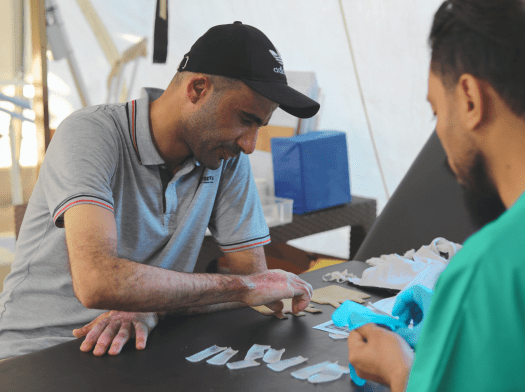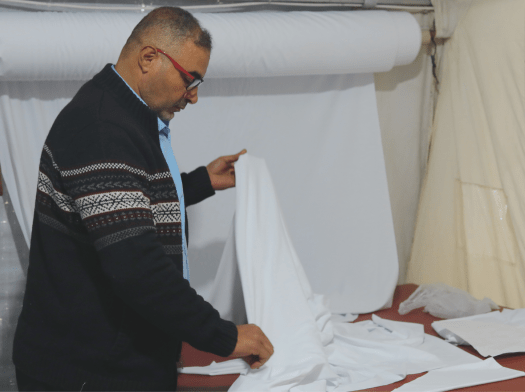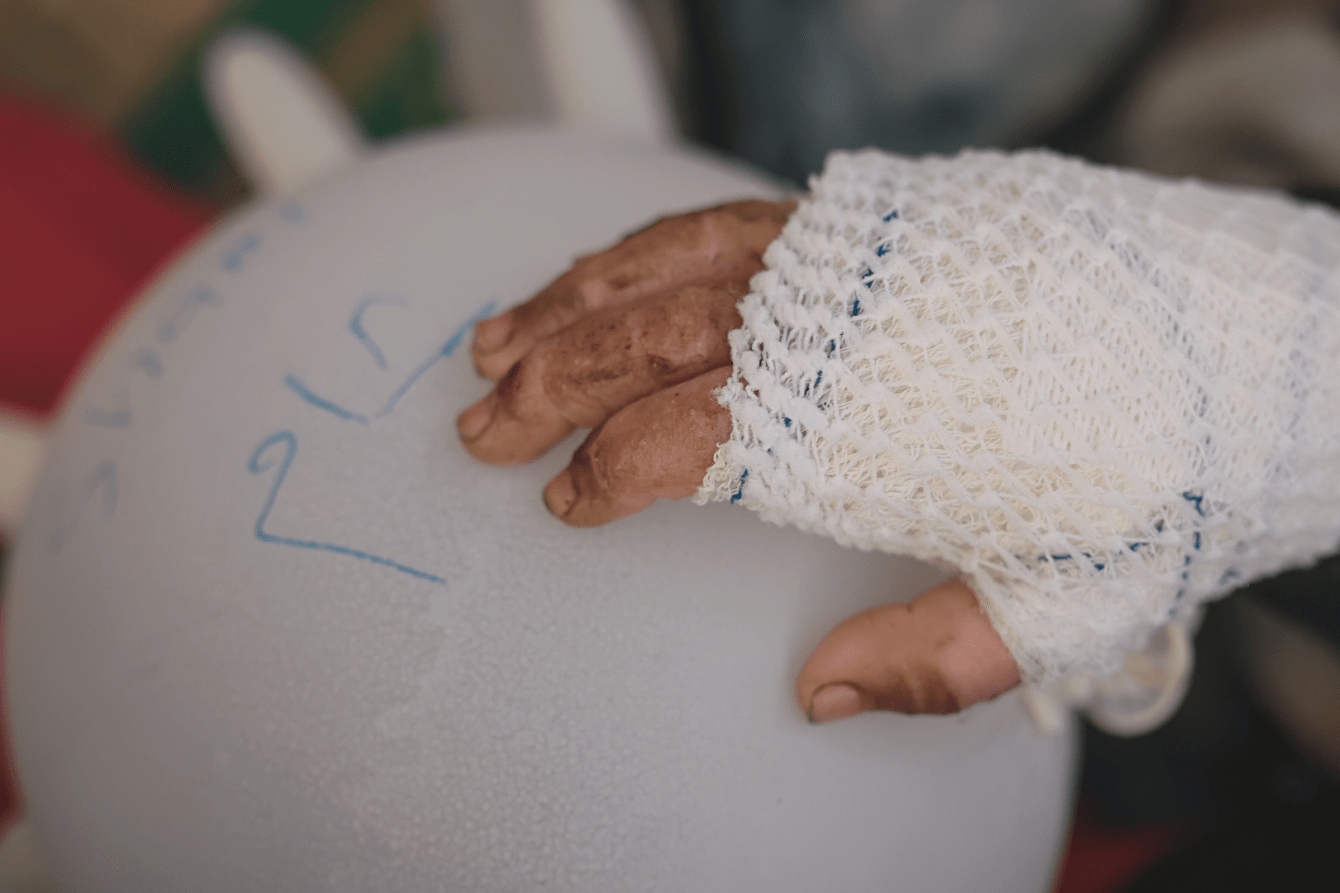As a result, our teams have had to adapt, creating new tools and innovative techniques to support patients in need of rehabilitation. Here, MSF physiotherapy manager Abed al Hamid Qaradaya explains how our teams are adapting to try to meet patients’ needs despite massive obstacles created by the Israeli blockade on Gaza.
Throughout the war on Gaza, our teams have faced many challenges and have been displaced from several places due to insecurity and Israeli offensives, from Gaza City to Khan Younis to Rafah. Since May 2024, we have been back in Khan Younis, supporting Nasser Hospital in southern Gaza. Because of ongoing displacement, we are currently working in a tent—no longer in an equipped physiotherapy center. We have had to adapt to a new model of care that focuses on functionality. The aim is to improve the patients’ quality of life despite the challenging war environment.
In recent months, we have been providing rehabilitation services to more than 100 patients each day who are under follow-up care here in the hospital. The injuries we see are difficult to treat as they are distinctive, such as double amputations, in addition to certain types of fractures that affect several parts of the body. In general, rehabilitation services are expensive and require a lot of space and tools like electric machines, gym equipment, and wheelchairs. Due to the Israeli blockade and the lack of medical supplies entering the Gaza Strip, we have started to provide these services using local alternatives to these tools.

Innovating to address supply shortages in Gaza
Crutches designed with locally sourced materials
We have faced a huge shortage of crutches. Our patients were unable to walk, and we were in a dilemma. We didn't know what to do. An idea that came to mind was that we could design the crutches with the same standard sizes at any shop. So we started to manufacture crutches from locally available materials like wood and metal. We drew a quick plan for designing the crutches with specific sizes and sent them to several local carpentry shops that still had wood.
We tried several prototypes with our patients, modifying them until we came up with the final shape. It was a successful experiment. We designed more than 500 crutches during the war and distributed them to our patients. It helped them a lot. We shared our success with other medical actors, who also adopted the crutches for their patients.

Ropes and tape to help a child walk again
One of the most touching stories we witnessed during the war was about a young boy who lost his right leg and left arm. This boy had been sitting in a wheelchair for a long time and was unable to move. We didn't have an appropriate wheelchair for him, so instead we decided to design a specific pair of crutches for him. We started to adjust them, and we tied the crutches to his hand using simple things like plastic, ropes, or Scotch tape. We tied them to his hand, and with this support he was able to walk again. It was as if he came back to life. I remember his tears. It was a historic day for him and his family. They were all crying that their boy was able to walk again.


From left: An MSF burn patient during a rehabilitation activity; Abu Muhammad designs compression suits with special fabric. Palestine 2025 © Nour Alsaqqa/MSF
Homemade pressure garments
We have also faced a critical shortage of the compression garments we used extensively before the war for the rehabilitation of burn patients. If burned tissue is not treated with pressure, it begins to wrinkle and cause severe deformities in the joints. Since we haven’t been able to receive these specific [items] in a sufficient quantity, we decided to hire a tailor and provided him with a sewing machine so we can support patients with “homemade” pressure garments. We have provided more than 400 pressure garments to burn patients since the war started.

The little hope we can give
When the ceasefire in Gaza was announced, I was overwhelmed with various feelings. I feel scared of the uncertainty of the future and what it will be like. Our experience during the war was unforgettable, and I know, for sure, that some of our patients will still suffer for years. I never could have imagined how important my role as a health worker would be in this war. Every step we took made a difference. Much of the work we did was seen as a miracle for the patients. Despite the difficult injuries they have, I see patients getting better and improving with the little hope we give.
MSF teams in Gaza have been providing patients who have wounds from war and violence with physiotherapy and rehabilitation since 2007, and occupational therapy since 2015.




